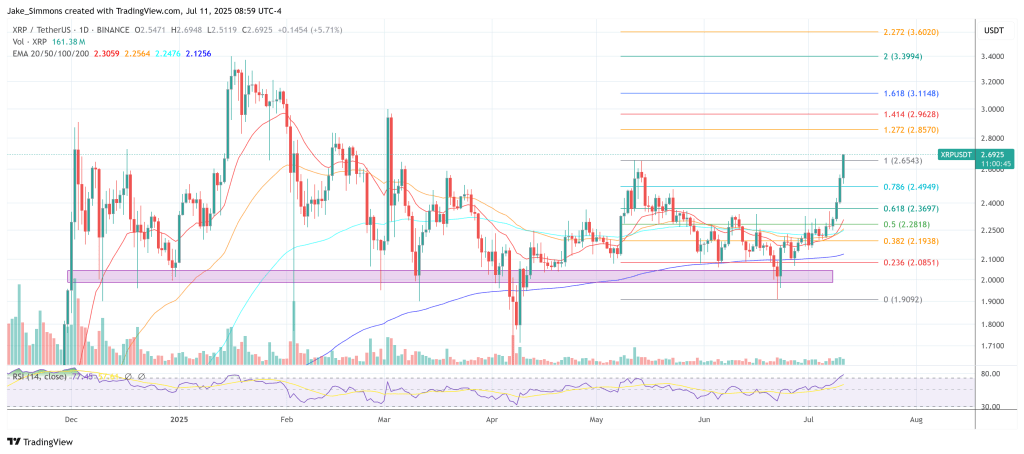Ripple Concludes Pilot In Kenya Using RLUSD

The first field deployment of Ripple’s US-dollar stablecoin, RLUSD, as a drought-insurance rail has wrapped up in Laikipia North, Kenya. According to an update from Ripple Impact, the four-month “anticipatory aid” experiment insured 517 pastoralists—roughly 70 percent of them women—against feed shortages that typically emerge after the long-rains season.
Ripple Tests RLUSD in Kenya Aid Pilot
Ripple disclosed the outcome in a post on X: “The Ripple Impact drought insurance pilot in Kenya concluded, successfully insuring 517 pastoralists (70% women) using RLUSD. Satellite data showed favorable vegetation during the pilot period, so no payout was triggered. This unused RLUSD rolls into the next pilot phase…”
Built in partnership with Mercy Corps Ventures and DeFi aid platform DIVA Donate, the scheme escrowed donations in RLUSD on Ethereum and released them only if satellite-derived Normalized Difference Vegetation Index (NDVI) readings fell below a calibrated threshold of 0.55. During the March-to-June observation window vegetation remained above 0.61, so smart contracts never unlocked the funds—precisely the outcome expected in a non-drought year.
Because no trigger was hit, the full RLUSD pool now carries forward for the short-rains dry spell that begins in October. DIVA Donate says the next phase will widen the cohort to 533 herder households and aims to raise $40,000, augmented by about $12,000 in unspent capital from earlier Mercy Corps Ventures and Arbitrum-backed campaigns.
For Ripple, the pilot doubles as a real-world stress test of RLUSD’s programmability. Launched in late 2024 on both the XRP Ledger and Ethereum, the stablecoin crossed the $500 million circulation mark this week and secured Bank of New York Mellon as primary reserve custodian, underscoring a compliance-first positioning in an increasingly competitive stable-asset sector.
Humanitarian technologists have long argued that pre-disaster cash beats post-disaster relief; the Laikipia experiment adds a cryptographic audit trail and automatic execution layer to that logic. By chaining disbursements to open-source oracles, donors can verify that money is held—and, when nature cooperates, preserved—exactly as promised. If October’s NDVI readings break below the floor, RLUSD will move straight to pastoralists’ mobile wallets without an intermediary in sight.
Whether the model scales will depend on satellite accuracy, mobile-money liquidity and stablecoin regulatory latitude in East Africa. For now, proponents regard the zero-payout result not as a dud but as statistical validation: in a season of healthy pasture, insurance is supposed to sit idle—while quietly extending its safety net into the next risk cycle.
At press time, XRP traded at $2.69.

Featured image created with DALL.E, chart from TradingView.com

Editorial Process for bitcoinist is centered on delivering thoroughly researched, accurate, and unbiased content. We uphold strict sourcing standards, and each page undergoes diligent review by our team of top technology experts and seasoned editors. This process ensures the integrity, relevance, and value of our content for our readers.